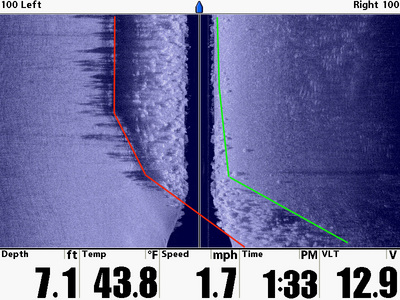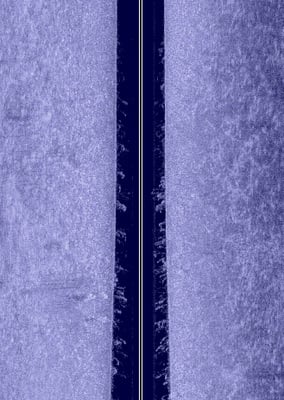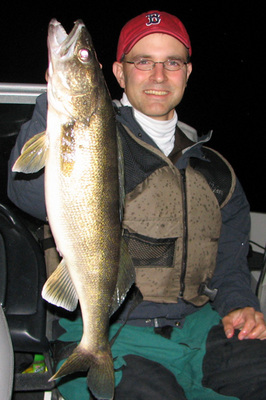Those who are schooled in the ways of the walleye recognize that fall is a time when many of these deep water denizens transition back into the shallows to gorge on bait before lakes become locked in ice. Pursuing oversized fall walleyes in shallow water after dark calls for boxes full of stick baits, line counter reels, thermoses full of coffee, and Humminbird Side Imaging fishing systems. Why add Humminbird to the list of must-haves for fall trolling trips? Because Side Imaging allows you to identify the key structural transitions that hold active fish, putting more bend in the rods and more fish in the net. I recently returned from the 2009 installment of fall night trolling on Mille Lacs, and wanted to share some screen captures from my 1197 to illustrate some of these key structural transitions.
I will focus the discussion on two different areas that are shallow water walleye magnets: weeds and rock. This first screen capture from my 1197 shows a band of shallow weeds (along the shore east of Garrison) that I’m driving through, from deeper water to the shallow water inside of the weeds. Remember that the Side Images are historical, with the most recent objects at the top of the Side Image, while objects that I passed some time ago are towards the bottom. The outside and inside weed edges are marked with the red and green lines, respectively, in the second picture. This weedbed contains a mixture of coontail and cabbage, and with a little practice it’s possible to pick out the individual weed types in the image. The cabbage strands (green arrows in the third picture) are slender and vertical, and rise higher in the water column than coontail, which grows in clumps that rise 12-18” off the bottom. Another neat feature of this screen capture is the sonar shadow cast by the weeds themselves off the deep weed edge. You can see that to the right side of the red lines in the second picture.









 Thanks Jason, and Bravo!!
Thanks Jason, and Bravo!! 



